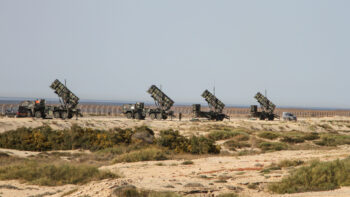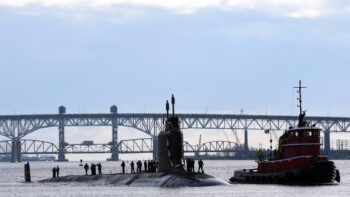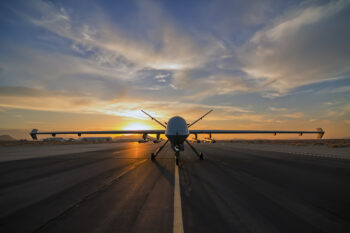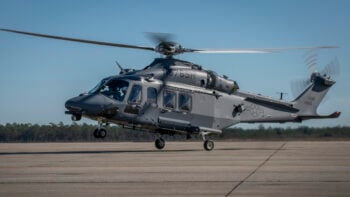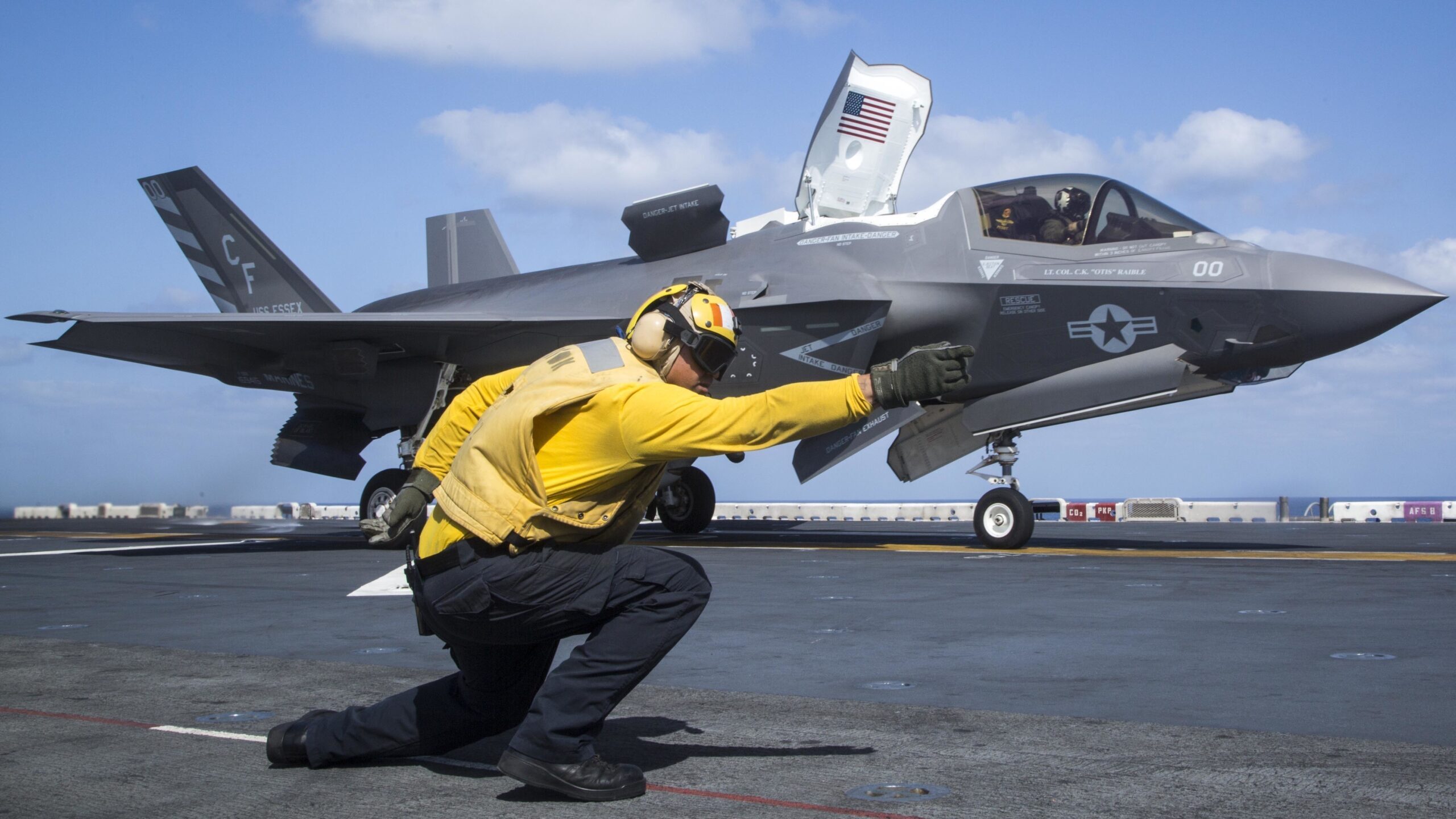
U.S. Navy Petty Officer 1st Class Rey White launches an F-35B Lightning II from the Wasp-class amphibious assault ship USS Essex (LHD 2), Sept. 22, 2018. (U.S. Marine Corps photo by Cpl. Francisco J. Diaz Jr./Released)
WASHINGTON — The Pentagon has finally approved the F-35 Joint Strike Fighter for full rate production, five years later than originally anticipated.
Defense Department acquisition chief Bill LaPlante signed off on the so-called “milestone C” decision earlier today, a crucial moment signifying the department’s confidence in the performance of the aircraft and maturity of Lockheed Martin’s production system — though the plane has already been in service in the US and with friendly foreign nations for years.
“This is a major achievement for the F-35 Program,” LaPlante said, according to a Pentagon news release. “This decision — backed by my colleagues in the Department — highlights to the Services, F-35 Cooperative Program Partners, and Foreign Military Sales customers that the F-35 is stable and agile, and that all statutory and regulatory requirements have been appropriately addressed.”
The Milestone C decision followed a March 7 meeting with the Defense Acquisition Board, which considered the findings of the F-35 Combined Initial Operational Test and Evaluation and Live Fire Test and Evaluation Report prepared by the Pentagon’s independent weapons tester, the department said.
While over 990 F-35s already have been delivered, the program has technically been stuck in its initial operational testing phase — and low-rate initial production — for years due to delays in standing up the Joint Simulation Environment, a digital environment that emulates advanced threats that cannot be replicated in live flight tests. Testing in the JSE was a prerequisite for the F-35 to complete IOT&E.
Compared to an original plan outlined in 2012, the program formally entered the operational testing phase over a year late in 2018, and testing in the JSE hit continual delays due to technical issues and pandemic challenges.
A key moment came in September 2023, when the F-35 completed 64 combat trials in the JSE known as “runs-for-score.”
The years of delays did little to impact F-35 sales and production, as Lockheed has been producing upwards of 100 F-35s per year since 2019, the year the F-35 was initially planned to achieve full rate production. The US makes the F-35 with seven international partners and has agreements to sell the planes to another nine. Israeli F-35s already have seen combat in the current Gaza crisis.
Raymond D. O’Toole, the Pentagon’s acting director of operational test and evaluation (DOT&E), said in a statement that his office continues to be concerned about the development of test infrastructure needed for the F-35’s upcoming Block 4 modernization plan, as well as the integration of future JSE capabilities.
Israel retires Patriot air defenses as native air defense systems step up
The decision comes amid Ukrainian clamoring for the system, though analysts doubted Israeli batteries would make their way north due to Russian sensitivities.

















